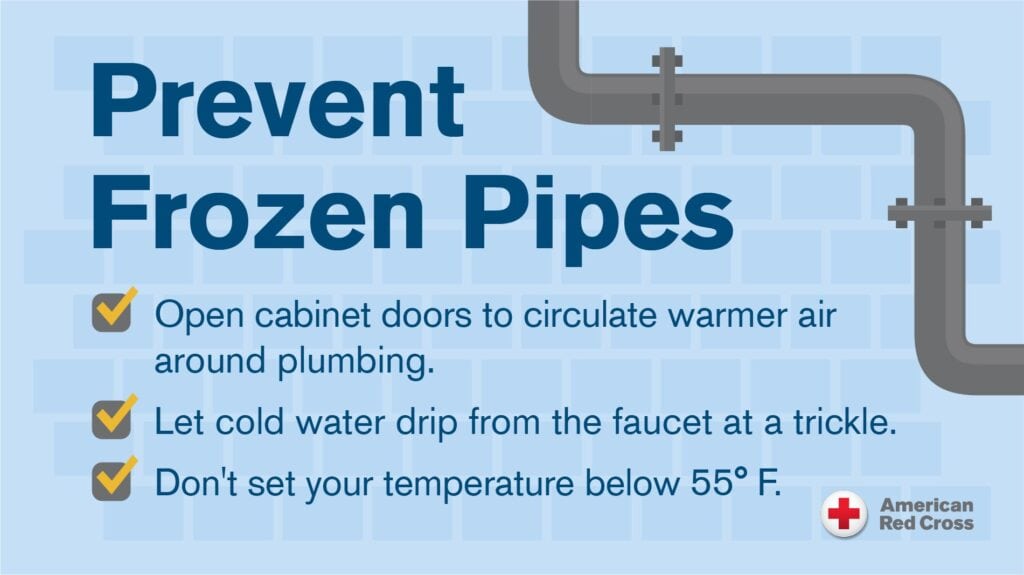
How to Help Prevent Frozen Water Pipes and Water Meters
When below-freezing temperatures are sustained over a few days, water pipes and meters that are close to cold air may freeze. The City of Madelia Public Works urges residents to take steps to prevent water pipes and meters from freezing.
Frozen water meters and water pipes can stop water service and may be expensive to repair or replace. Property owners are responsible for protecting both water pipes and the water meter from damage. Preventing pipes and meters from freezing is much easier—and less costly—than trying to thaw them later. Be proactive!
Here are some money-saving suggestions:
To Help Prevent Frozen Water Pipes
Make frequent use of your water supply:
- Flowing water can help prevent freezing. When outside temperatures remain below freezing, it’s less expensive to run a small stream of water than to repair a frozen or burst pipe.
Eliminate cold drafts near water pipes:
- Tightly close doors and windows to the outside.
- Install storm windows on basement windows.
- Eliminate drafts from crawl spaces.
- Fill cracks in walls and around windows.
- Turn off and drain water connections to garden hoses before freezing temperatures set in.
Provide warmth to the water pipes:
- Open doors to rooms where pipes are located to allow warm air to circulate.
- Place a lighted bulb near water pipes—never use open flames.
- Wrap pipes in insulation or heat tape.
- If your kitchen or bathroom sink is against an outside wall, insulate the wall and open the cabinet doors to let warm air reach the pipes.
How To Thaw Frozen Water Pipes
If no water comes from your faucets when you turn them on, your pipes may be frozen—most likely those near an exterior wall, door, window, or floor.
- Open a faucet near the frozen pipe to release vapor and allow melted water to flow.
- Begin warming the pipe nearest the faucet and work toward the frozen section.
- Blow warm air on the pipe using a hair dryer—do not leave it unattended.
- Never use a blowtorch or open flame; this is a serious fire and explosion hazard.
- Once water begins to flow, let a pencil-sized stream run until normal heating is restored.
- Eliminate drafts and allow warm air to circulate to prevent refreezing.
How To Help Prevent a Frozen Water Meter
- It is colder near the floor and along basement walls than near the ceiling, so make sure warm air can circulate around your meter.
- Follow the same steps listed above for preventing frozen pipes.
- If your meter is in a separate room, leave the door open so warm air can circulate.
- If your meter is in a cabinet, open the cabinet door.
- If your meter is in an outdoor pit, make sure the cover fits properly and has no cracks that allow cold air to enter. The pipes, valves, and meter inside such pits should not touch the concrete walls.
If you suspect damage to water pipes or the water meter, call the City Hall Monday–Friday, at (507)642-3245.
